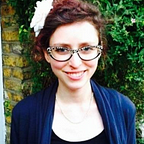The Concrete, Pictorial, Abstract (CPA) approach in physics
The Concrete, Pictorial, Abstract (CPA) approach
Just like maths, much of physics is abstract. This can make it hard to understand (especially for younger pupils), as the underlying ‘big ideas’ can be quite distant from, or at times even in conflict with, our own experiences of the world — as anyone who has taught Newton’s first law of motion knows all too well!
The ‘Concrete Pictorial Abstract’ (CPA) approach, which I learnt about when I started working in a primary school, is a way of thinking about teacher scaffolding — steps to help get pupils from their current ideas to being able to understand an abstract physics idea.
Part of its value for me is its simplicity. It’s what I do most of the time, having learnt from years of experience in teaching that it works well, but I still find it a helpful reminder to:
- Start with something concrete / tangible. E.g. for light get out torches, lasers, ray boxes, light bulbs. Guide pupils’ experiences and observations through questions, modelling and demos.
- Create a visual representation of it. E.g. for light draw ray diagrams.
- Derive rules, mathematical relationships. E.g. light travels in straight lines, angle of incidence = angle of reflection.
This works very well for plenty of primary science and some KS3 topics, for instance light, sound and properties of materials. Pupils can experience them directly through their senses, carry out tests, record their observations and watch teacher demos. With teacher guidance, pupils can then create visual and verbal representations to describe them, and where appropriate arrive at abstract and more formal explanations and relationships.
At primary school we don’t always get to the ‘abstract’ stage, or it might look different — for instance, we might reach a formal definition or rule rather than derive a mathematical relationship.
Sometimes we need more than one ‘CPA cycle’
But some topics don’t fit neatly with this approach. Much of what we learn about in physics is abstract (energy), too small to observe directly (fundamental particles) or too big (space), and so there isn’t always an obvious ‘concrete’ experience of it. For instance, when teaching electrical circuits we can get the equipment out and make circuits, but it is then tricky to take the step from our concrete observations to pictorial and abstract representations that help us to understand and explain what is going on.
This step, between what we observe at the macroscopic level and what’s happening at the submicroscopic level, can be thought of as two iterations of the CPA cycle — the first one focusing on description, the second allowing us to explain our observations by considering what is happening inside the wires.
Chemistry teachers will be familiar with Johnstone’s Triangle, which highlights three levels of representation — macroscopic, submicroscopic and symbolic — and the importance of explicitly teaching pupils about them and how to ‘jump’ between them. I think this idea can be equally useful to physics teachers, and that when combined with a ‘CPA’ approach, makes for a powerful tool for planning physics teaching. Here is how I am conceptualising a way to fit them together when teaching circuits:
Here we have an initial ‘CPA cycle’ focusing on what is happening at a macroscopic level, during which we make observations and then visually represent them, initially by drawing what we see and then learning formal symbols. We then have another CPA cycle using models that support understanding of what is happing in the wires (submicroscopic), which then leads to our definition of terms and to mathematical relationships.
In order to have this second CPA cycle, I use physical and virtual models and treat them as concrete and pictorial. Whilst this is something I may change my mind about in the future, for now I find it useful to remind me to include a stepping stone, or ‘bridge’ between macroscopic descriptions and microscopic explanations (as I’ve tried to show in the above diagram). I consider it to be key to teaching for understanding, rather than just teaching definitions and rules.
In my next blog post I will go into more detail about the models in the above diagram, which I find particularly useful for teaching circuits. I will also explain why I use them when teaching primary school pupils about circuits.
